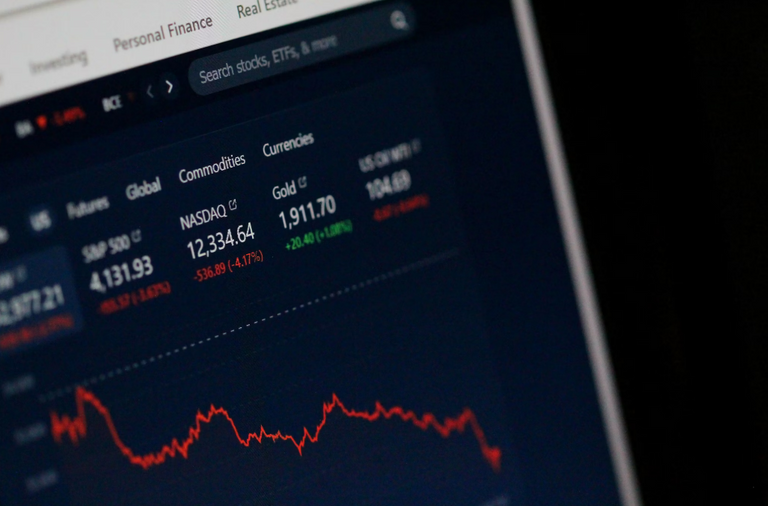Advanced Guide to Price Action Trading: Mastering Market Structure and Strategies
Price action trading is a powerful trading approach that relies purely on price movement, without using traditional indicators. This strategy helps traders understand market structure, identify high-probability setups, and make informed trading decisions based on price behavior alone.
In this advanced guide, we will cover:
✅ The Core Concepts of Price Action Trading
✅ Market Structure and Key Levels
✅ Advanced Price Action Strategies
✅ Risk Management Techniques
✅ Psychological Discipline in Price Action Trading
1. Understanding Price Action: The Core Concepts
What is Price Action?
Price action refers to the movement of a security's price plotted over time. Instead of relying on lagging indicators, traders analyze price itself, focusing on candlestick patterns, trend strength, and key levels of support and resistance.
Why Trade with Price Action?
✔ No Lag: Unlike indicators, price action reflects real-time market sentiment.
✔ Works Across Markets: Effective in forex, stocks, commodities, and crypto.
✔ Flexible & Adaptive: Can be combined with various trading styles (scalping, swing trading, day trading).
2. Market Structure and Key Levels
Understanding market structure is essential for price action traders. The three fundamental components of market structure are:
A. Market Phases
Uptrend (Higher Highs & Higher Lows)
- Strong bullish momentum.
- Look for buying opportunities at retracements.
Downtrend (Lower Highs & Lower Lows)
- Bears control the market.
- Sell on pullbacks to key resistance levels.
Consolidation (Range-bound Market)
- Market moves sideways.
- Wait for a breakout before entering trades.
B. Support and Resistance
- Support: A level where price tends to find buying interest and bounces upward.
- Resistance: A level where price meets selling pressure and reverses downward.
💡 Tip: The more times a level is tested, the stronger it becomes. Look for price reactions at these zones.
C. Supply & Demand Zones
- Supply Zone: An area where aggressive selling has occurred, causing a strong price drop.
- Demand Zone: An area where buyers have stepped in, pushing prices higher.
3. Advanced Price Action Trading Strategies
A. Breakout Trading Strategy
📌 Objective: Trade strong breakouts from consolidation or key levels.
🔹 Entry: Enter when price breaks above resistance (bullish) or below support (bearish).
🔹 Confirmation: Look for a retest of the broken level.
🔹 Stop-Loss: Below support for long trades, above resistance for short trades.
💡 Pro Tip: Avoid false breakouts by waiting for confirmation via candlestick closes above/below key levels.
B. The Trend-Following Strategy
📌 Objective: Ride the trend using price action confirmation.
🔹 Entry: Buy in an uptrend when price pulls back to a support level or trendline.
🔹 Exit: Close trade at key resistance or when trend structure breaks.
🔹 Stop-Loss: Below the previous higher low in an uptrend (vice versa for downtrend).
💡 Pro Tip: Combine this with moving averages (e.g., 20 EMA) to enhance trade timing.
C. The Reversal Strategy
📌 Objective: Catch market tops and bottoms using reversal candlestick patterns.
🔹 Key Patterns: Pin Bars, Engulfing Candles, Double Tops/Bottoms
🔹 Entry: Enter when price shows strong rejection at support/resistance.
🔹 Stop-Loss: Below the low (for bullish reversals) or above the high (for bearish reversals).
💡 Pro Tip: Higher timeframes (H4, Daily) provide stronger reversal signals than lower timeframes.
4. Risk Management & Trade Execution
Even the best price action strategy is useless without proper risk management. Follow these rules to protect your capital:
✅ Risk per trade: Never risk more than 1-2% of your account on a single trade.
✅ Risk-to-reward ratio: Aim for at least a 1:2 or 1:3 risk-to-reward ratio.
✅ Position sizing: Adjust lot sizes based on account size and risk percentage.
✅ Avoid overtrading: Quality over quantity—wait for high-probability setups.
💡 Pro Tip: Use ATR (Average True Range) to set realistic stop-loss distances based on market volatility.
5. Trading Psychology: The Key to Consistency
Price action trading requires discipline and patience. To stay consistent, follow these psychological principles:
✔ Stick to Your Trading Plan: Don’t deviate based on emotions.
✔ Control Fear & Greed: Don’t chase trades or hold losses too long.
✔ Trust Your Analysis: Don’t second-guess your entries after placing trades.
✔ Embrace Losses: Losses are part of the game; focus on executing trades properly.
💡 Pro Tip: Keep a trading journal to analyze your trades and improve over time.
Final Thoughts: Mastering Price Action Trading
Price action trading is a skill that improves with experience. By mastering market structure, key levels, and high-probability setups, you can trade confidently without relying on indicators.
✅ Focus on clean charts and raw price movement.
✅ Practice identifying trends, support, and resistance.
✅ Stick to risk management rules for long-term success.
🔹 Now it's your turn! Start analyzing price action on live charts and refine your strategy over time. Let me know if you need more insights or examples!



